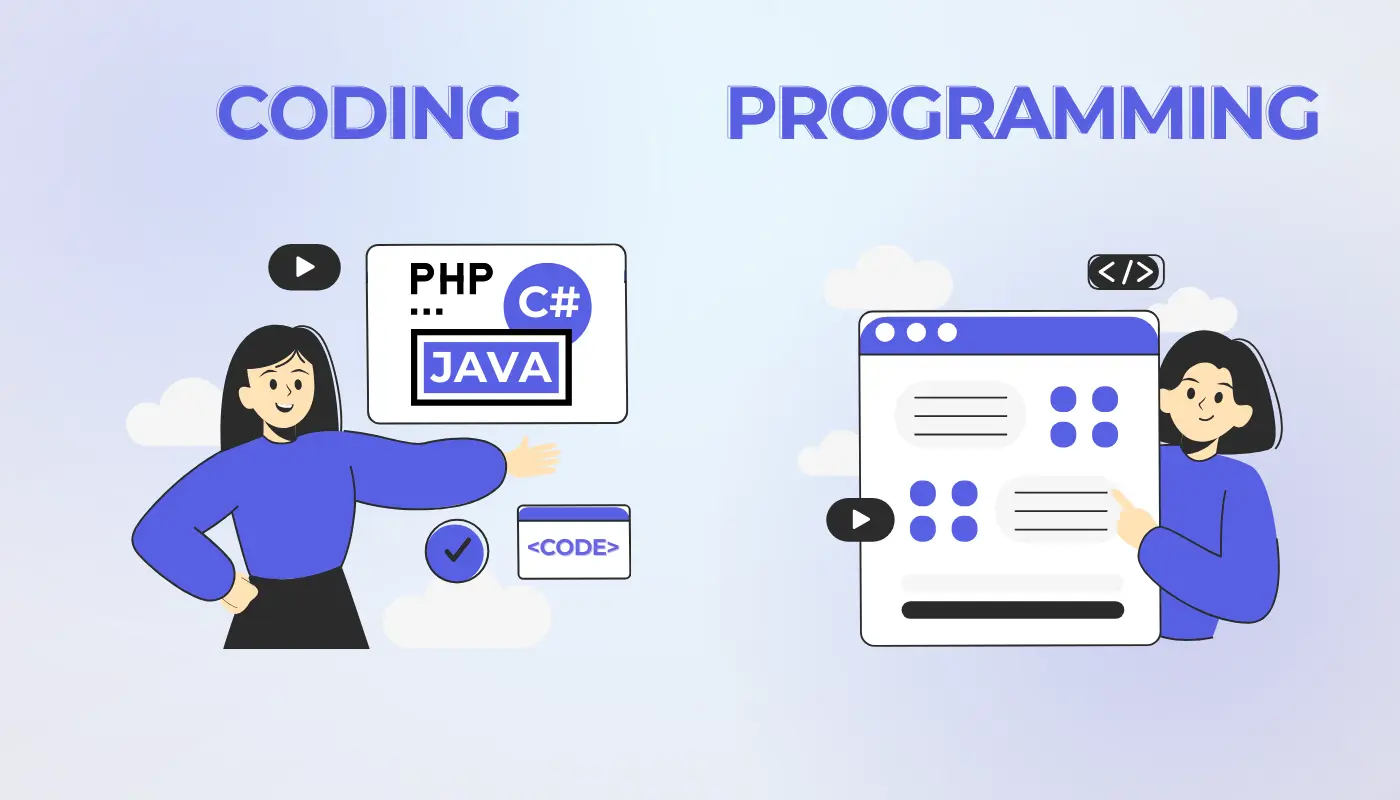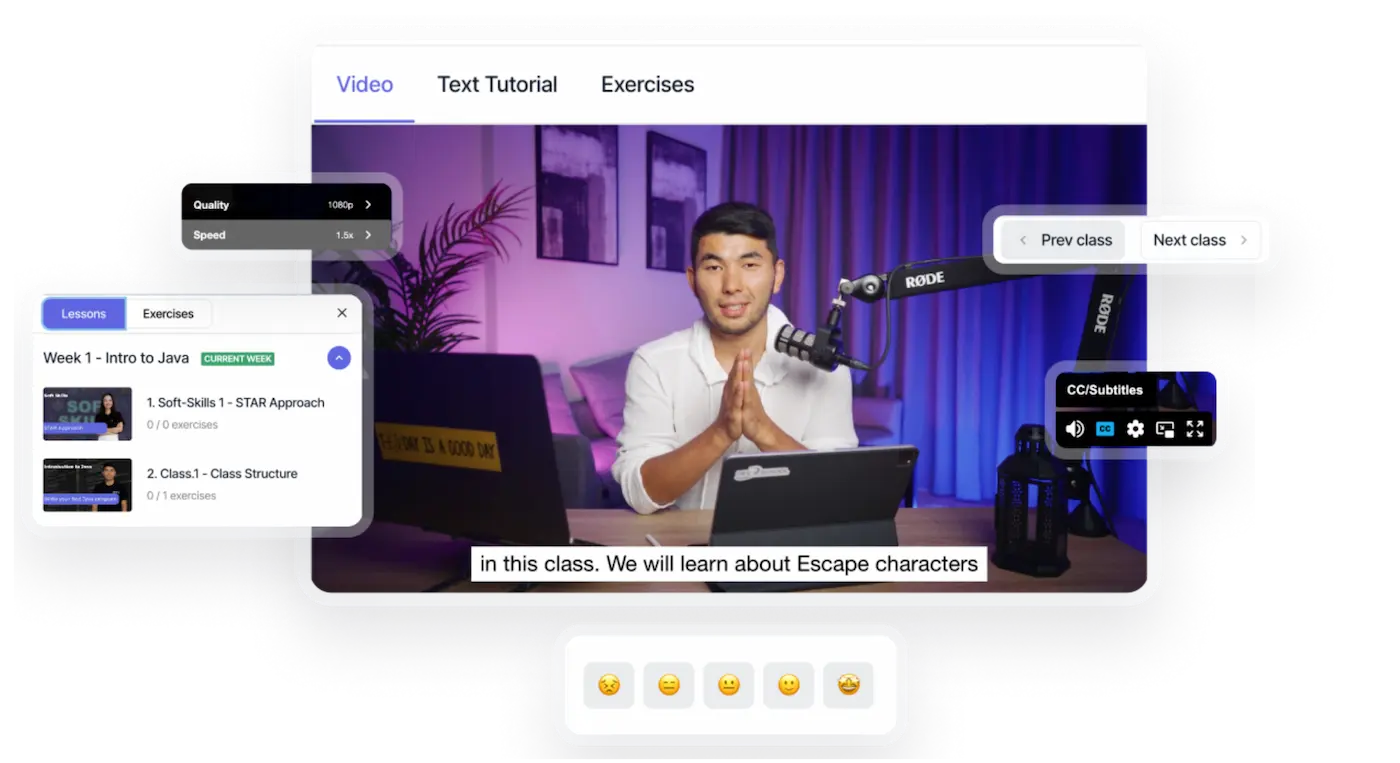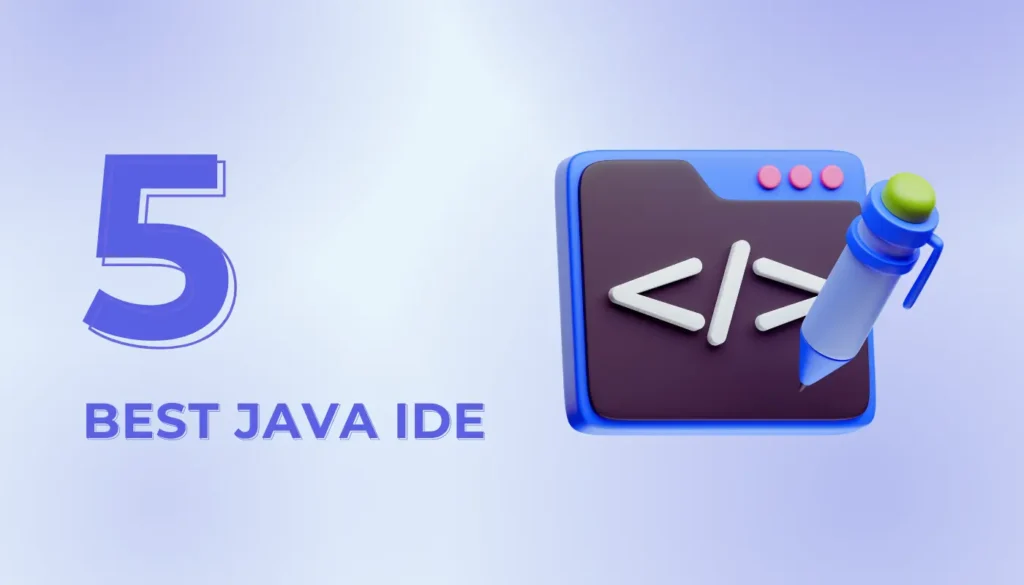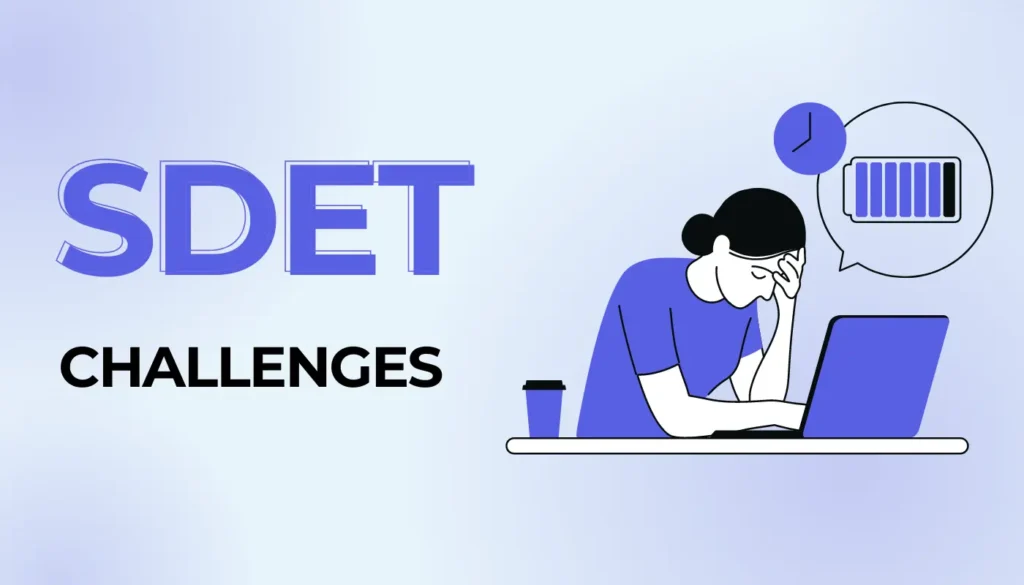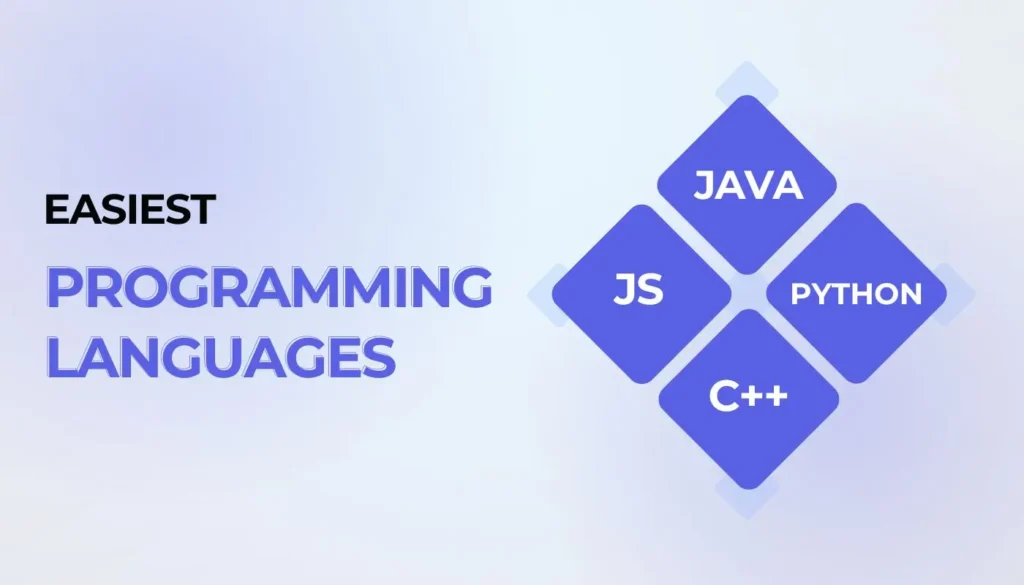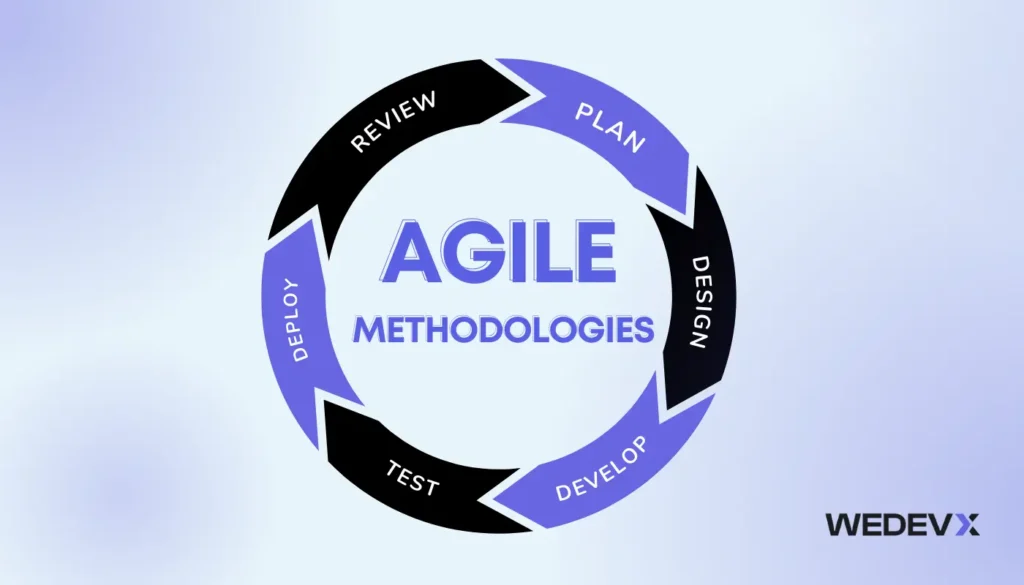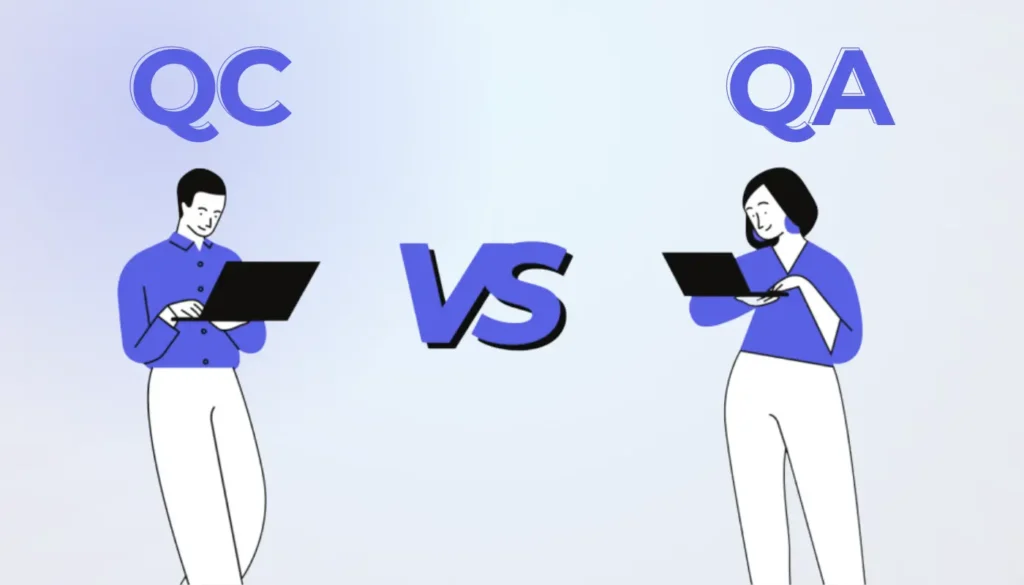The key difference between coding and programming is that coding handles the syntax and code structure, while programming deals with software development concepts, design patterns, and project management
The terms “coding” and “programming” are often used interchangeably, right? This leads many individuals to believe both refer to the same concept. However, that’s not true. This common misconception overlooks the distinct roles coding and programming plays in software development.
Let’s discuss in detail, exploring every aspect of coding vs programming. Rest assured that our insights are backed by reputable resources. Once you go through this article, there will be no more confusions or misconceptions.
Aspect | Coding | Programming | Reason for Difference |
|---|---|---|---|
Complexity |
Lower complexity
|
Higher complexity
|
Coding involves writing code within the parameters set by the program design whereas programming includes all aspects from design to maintenance, requiring a deeper understanding
|
Skill Level
|
Basic knowledge and skills in specific programming languages
| Extensive knowledge including system design, testing, etc |
Programming requires a comprehensive skill set to handle all stages of software development whereas coding is more about translating logic into a language a computer can understand
|
Responsibility
| Limited to writing and executing code for specific tasks.
| Oversees the entire project lifecycle.
|
Coders focus on the smaller, more focused tasks whereas programmers are responsible for managing the project from the planning stage to deployment and maintenance.
|
Creativity |
Execution focused; follows plans
|
Involves planning, creating, and solving problems
|
Coding is about implementing pre-defined plans whereas programming involves creating those plans and anticipating future issues, requiring more creative and abstract thinking
|
Scope of Work
|
Involves writing code
|
Involves writing code and much more
|
Coders are tasked with the specific job of coding only whereas programmers have to ensure that the entire scope of the project is covered, from conceptualization to functionality
|
Career Path
|
Often a stepping stone to programming
|
A broader and more strategic role
|
Coding is generally considered the first step into the software development world, which provides the fundamental skills needed for the more comprehensive role of programming
|
Educational Requirements
| Often learned through self-study or short courses |
May require formal education or significant experience
|
The simpler tasks in coding can be self-taught or learned through less formal education whereas programming often requires a deeper educational background due to its complexity
|
What is Programming?
Programming is a comprehensive process that encompasses much more than code writing. It covers everything, from the initial planning to designing, testing, and maintenance of software applications.
We can say that the role of a programmer is composite. They need to gain a deep understanding of logic, algorithms, and the capabilities of every other programming language. All just to create efficient, effective software solutions.
The programmers basically follow a series of stages to “conceptualize and develop” a software solution based on specific user requirements.
First of all, the programmers define the problem. This allows them to design the required algorithms and create flowcharts to map out the solution before coding begins. Consequently, the code is written. After integrating the software components, they ensure that everything works together seamlessly.
So, after coding, the software undergoes rigorous testing to identify and fix bugs. Once the quality assurance is done, the programmers deploy the software so that end users can leverage it.
You should know that the programming also includes ongoing maintenance. This is necessary to improve functionality and address any issues as they arise.
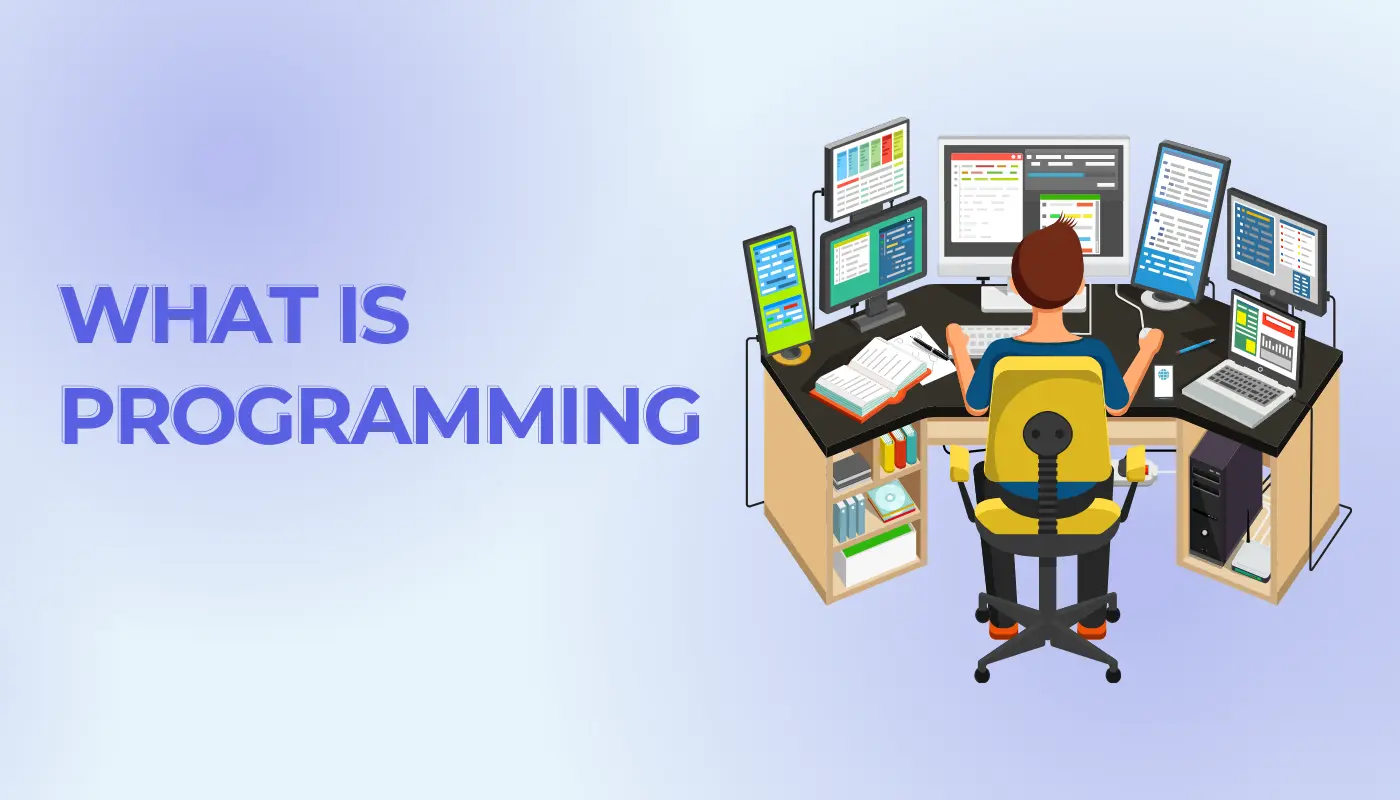
What is Coding?
Coding is the foundational step in software development. It requires attention to detail and an understanding of the syntax and semantics of the chosen programming language.
Basically, it’s a process in which we translate algorithms and specifications into executable computer programs. The coding specialists write lines of code that computers can interpret to perform specific tasks. It’s done using a suitable programming language. Coders can use various programming languages, such as Python, Java, or C++, to create scripts or programs.
The primary focus of coding is to “implement the functional parts of an application” as outlined in the program design”. All just to ensure that the written code performs the intended tasks efficiently.
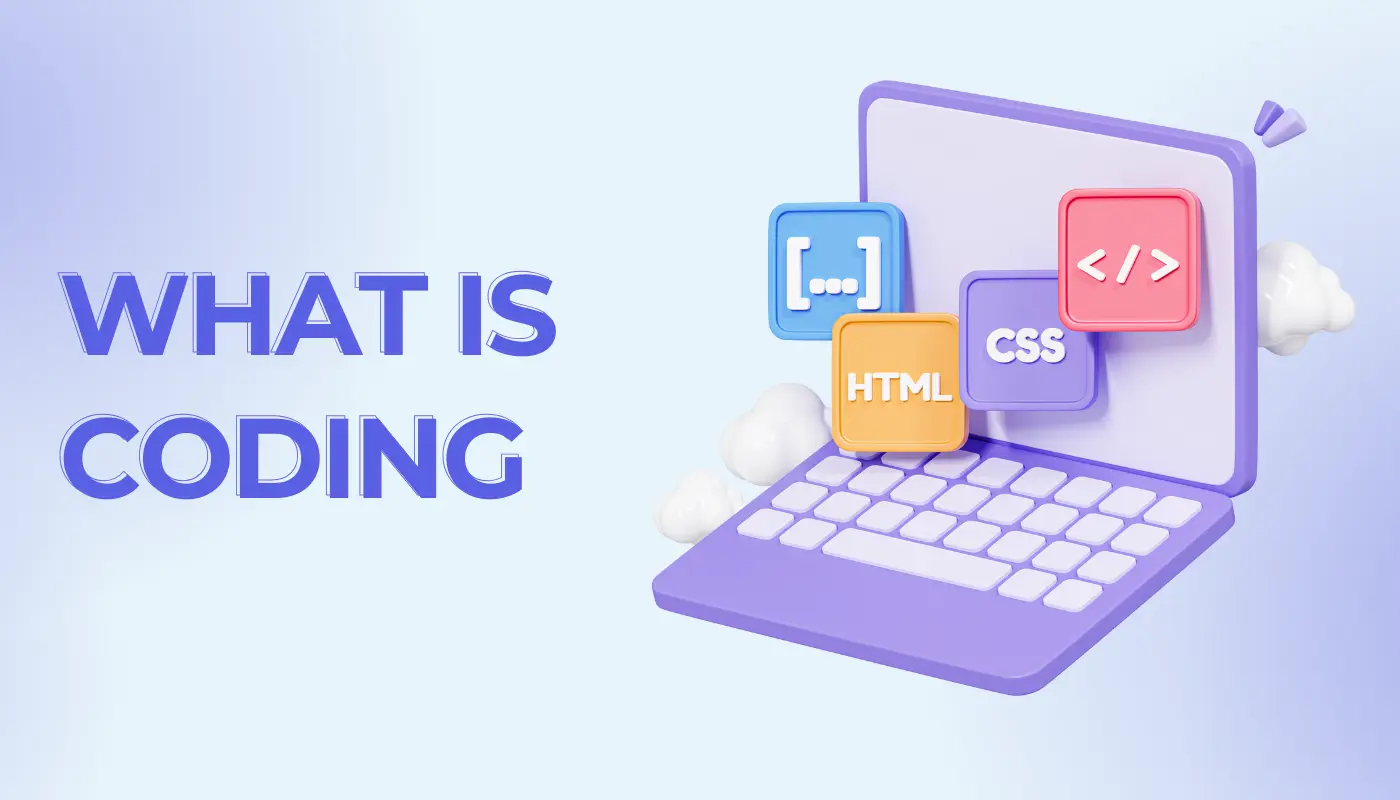
Don't know where to start your tech career?
We are here for you! Schedule a free call with our consultant for personalized advice on achieving your learning goals
Programming Comes First or Coding?
Programming precedes coding. Programming lays the groundwork—conceptualizing, planning, and designing a software solution. Once all this is done, coding commences. Coding is basically the execution phase where the plans and designs are translated into actual code. This involves writing the program in a specific programming language. Yes, that’s how the theoretical design is transformed into a functional software application.
In short terms, programming sets the strategic framework and coding is the practical implementation that brings the software to life.
How Programming and Coding Works in a Flow?
Programming and coding are key stages in software development. They form a dynamic cycle that evolves with new technologies and requirements. Basically, programming outlines the strategic plan and then coding turns these plans into executable code.
Here’s how software development lifecycle is covered through programming and coding:
- Requirement Analysis – The process begins with programming, where programmers gather and analyze requirements to understand what the software must achieve. This phase establishes the foundation for all subsequent activities.
- System Design – Consequently, the programmers design the system architecture. They design models and diagrams that outline the software’s structure, functionality, and behavior. These help ensure that the software will be scalable, maintainable, and according to user needs.
- Coding – Once the system design in place, coding process starts. Coders leverage their skills to convert the detailed design documents into executable code. For this, they use appropriate programming languages such as Java, Python, or C++. The type of programming language is chosen based on specified requirements.
- Testing – As coding process keep going, they use testing methods to validate the code. Either individual parts are tested for functionality or different parts are tested together to ensure they work harmoniously.
- Debugging – Any issues or bugs identified during the testing phase are addressed in the debugging phase. In fact, coders go back to the source code to fix errors, improve performance, and ensure reliability.
- Deployment – Once the software is tested and debugged, it is deployed into a production environment where users can start using the product. This may involve software installation on client devices or set up on servers.
- Maintenance – Post-deployment, the software is not static. It requires ongoing maintenance to correct any newly discovered bugs, respond to user feedback, implement updates, and add new features to keep the software relevant and effective.
- Documentation – Well, every aspect of the software development cycle is recorded, such as what has been done, when, where, and why. This documentation helps in ongoing maintenance and future development efforts. More clearly, it allows new programmers and coders understand the system and contributes to a smoother workflow.
Still Confused About Why Coding and Programming are Different?
Coding and programming are distinct but closely linked phases in the software development process. Each uniquely contributes to the creation and management of software.
For instance, if you are developing a software application, such as a simple to-do list, you will begin with the programming phase. This is where you’d outline the necessary features and overall architecture. You will define functionalities such as task addition, categorization, and completion using flowcharts. Simultaneously, you will select technologies like React for the frontend and Node.js for the backend, and design a MongoDB database schema for storing data.
Once planning is covered, you will transition to the coding phase. This is where you will implement the designs by writing actual code. You will use HTML, CSS, and JavaScript for the frontend to create a responsive user interface. Node.js will be used for backend logic to manage database interactions and integrate APIs for notifications.
After coding, you wukk rigorously test the app using tools like Jest for JavaScript testing and Postman for API testing to ensure all components work seamlessly together.
Keep in mind that deployment will require you to set up servers on platforms such as AWS. For this, you’ll use CI/CD pipelines for continuous deployment. You will also maintain the app by monitoring performance, fixing bugs, and updating features based on user feedback.
We are hopeful this workflow is clear enough to show how programming sets the strategic framework and coding translates everything into an operational software product.
Final Words
If you are about to begin your software development journey, then it is important to grasp the distinction and connection between programming and coding. Programming involves the entire process from planning to execution. Whereas coding is the specific task of writing code to cover everything that’s been decided during programming phase. Both work hand in hand to turn ideas into reality.
